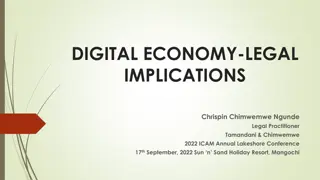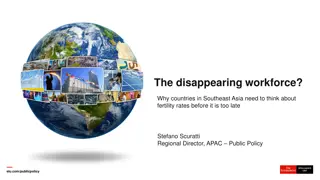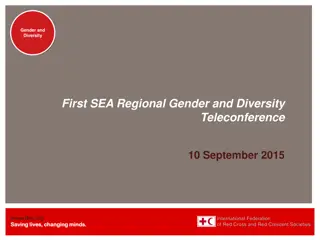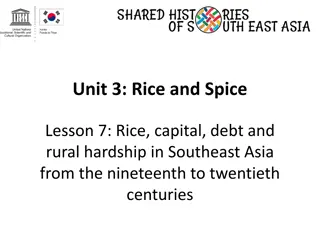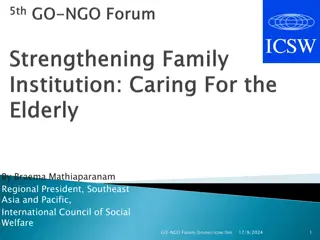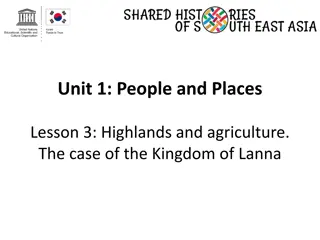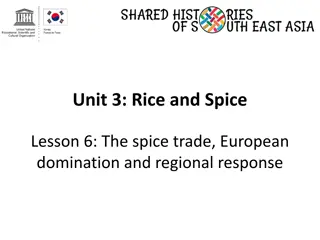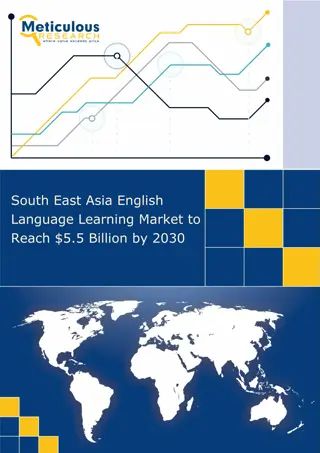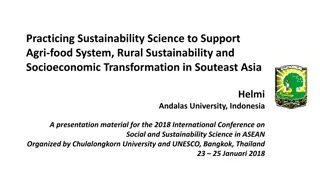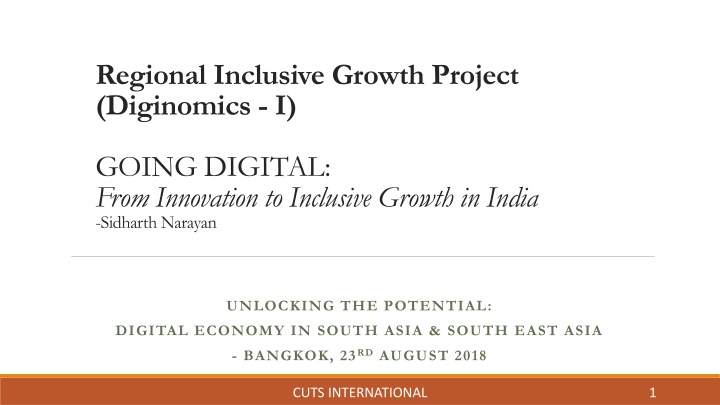
Unlocking Digital Economy Potential in South Asia & Southeast Asia
This compilation covers topics such as the regional inclusive growth project in India, digital footprints, e-clinic services in Rajasthan, and effective governance through digital payments in India. It highlights the challenges and opportunities in leveraging digital innovations for inclusive growth, particularly in the healthcare and financial sectors.
Download Presentation

Please find below an Image/Link to download the presentation.
The content on the website is provided AS IS for your information and personal use only. It may not be sold, licensed, or shared on other websites without obtaining consent from the author. If you encounter any issues during the download, it is possible that the publisher has removed the file from their server.
You are allowed to download the files provided on this website for personal or commercial use, subject to the condition that they are used lawfully. All files are the property of their respective owners.
The content on the website is provided AS IS for your information and personal use only. It may not be sold, licensed, or shared on other websites without obtaining consent from the author.
E N D
Presentation Transcript
Regional Inclusive Growth Project (Diginomics - I) GOING DIGITAL: From Innovation to Inclusive Growth in India -Sidharth Narayan UNLOCKING THE POTENTIAL: DIGITAL ECONOMY IN SOUTH ASIA & SOUTH EAST ASIA - BANGKOK, 23RDAUGUST 2018 CUTS INTERNATIONAL 1
Digital Footprints in India Digital Footprints in India Current Scenario Scenario Current Personal Life Professional Life Consumers Way of Conducting Business Disruptive Innovation Private Players Governance Economy SDGs Government CUTS INTERNATIONAL 2
E E- -clinic Services in Rajasthan, India: A clinic Services in Rajasthan, India: A Case Study Case Study 75 percent of medical dispensaries and 60 percent of hospitals are located in urban areas 80 percent of doctors serve urban areas, barely catering to approximately 28 percent of the national population Rural population majorly depends on public healthcare facilities, which is struggling with challenges, such as poor budgetary allocations and shortage of staff Availability of doctors and skilled healthcare professionals is also a concern, owing to their unwillingness to work in low resource settings CUTS INTERNATIONAL 3
E E- -clinic Services in Rajasthan, India: A clinic Services in Rajasthan, India: A Case Study Case Study ICT enabled innovative solutions, such as E-clinics, have enabled access to essential services to the underprivileged and underserved areas. E-clinics are gaining popularity and acceptance, among citizens over time, and are considered as low cost and effective mode of providing primary healthcare services. ICT have the potential to accelerate the efforts moving towards achieving the objectives of SDG Goal Number 3 of the United Nations (UN) Good Health and Well-Being . CUTS INTERNATIONAL 4
Effective Governance through Digital Payments Effective Governance through Digital Payments in India: A Consumer & Merchant Oriented in India: A Consumer & Merchant Oriented Case Study Case Study India, with a population of over 1.3 billion people, spread over approximately 3 million sq.km, faces challenges in achieving financial inclusion Majority of the financially excluded population hail from rural areas, which attribute to approximately 67 percent of the total population Pradhan Mantri Jan-Dhan Yojana (PMJDY) was launched in August 2014, has so far resulted in opening of 314 million zero balance bank accounts Over 190 million Indian adults still do not have a bank account. CUTS INTERNATIONAL 5
Effective Governance through Digital Payments Effective Governance through Digital Payments in India: A Consumer & Merchant Oriented in India: A Consumer & Merchant Oriented Case Study Case Study ICT enabled digital solutions, have made it easier for citizens to avail services and receive benefits, from the government Leakages and malpractices in G2P payments have reduced because of digital payments While the uptake of digital payments is rising, the pace of uptake may be enhanced through capacity building among citizens and strengthening of infrastructure, especially at the last mile CUTS INTERNATIONAL 6
Assessing the Regulatory Challenges in Assessing the Regulatory Challenges in the Digital Economy Framework the Digital Economy Framework Government Consumers Private Players Imperfect Information Obsolete Regulations Regulatory Overlaps Regulatory Uncertainty Insufficient Infrastructure and access to ICT Poor digital literacy Data privacy and cyber- crimes Fake news / misinformation Algorithmic price fixing and anti-competitive practices Forum shopping Misappropriation of consumer data CUTS INTERNATIONAL 7
Way Forward Need for Optimal Regulation Undertake Impact Assessments of Regulations (Existing and Proposed) Inclusive and transparent approach to regulatory decision making Focus on R&D Overcome digital infrastructural challenges and new age consumer concerns CUTS INTERNATIONAL 8
Further Deliberation Examine the need for capacity building of regulators and policy makers. How to promote enhanced uptake of digital technologies by consumers. Ways for enhanced collaboration between the government and businesses for increased penetration of digital economy. Explore opportunities for cross-learning between various countries on similar lines such as this study. CUTS INTERNATIONAL 9
Thank you for your attention! Thank you for your attention! - Sidharth Narayan Sidharth Narayan Senior Research Associate Senior Research Associate CUTS International, Jaipur CUTS International, Jaipur Tel: +91 141 2282821 Tel: +91 141 2282821- -3 Ext: 119 Fax: +91 141 2282485 Fax: +91 141 2282485 Mobile: +9198100 64675 Mobile: +9198100 64675 Email: Email: sid@cuts.org sid@cuts.org Web: Web:www.cuts www.cuts- -ccier.org 3 Ext: 119 ccier.org CUTS INTERNATIONAL 10


